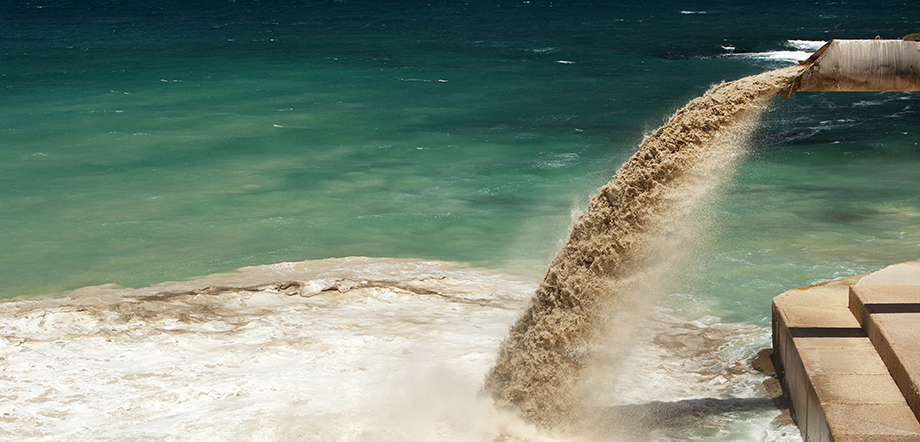Client Alerts
Supreme Court Adopts Major New “Functional Equivalent Test” for Discharges under Clean Water Act
April 2020

Client Alerts
Supreme Court Adopts Major New “Functional Equivalent Test” for Discharges under Clean Water Act
April 2020
On April 23, 2020, the U.S. Supreme Court issued a major ruling interpreting the breadth and scope of the Clean Water Act in County of Maui v. Hawaii Wildlife Fund. The central issue was whether the Clean Water Act requires a permit when pollutants originate from a point source but are conveyed to navigable waters by a non-point source (in this case, groundwater). The Court ruled that a permit is required when such a discharge is the “functional equivalent of a direct discharge.”
Why is this decision noteworthy?
A source of ongoing debate over the scope of the Clean Water Act has been to what extent does the statute regulate discharges when they come into contact with groundwater? The case at hand involved a wastewater treatment plant that discharges polluted water into the ground where it mixes with groundwater, which, in turn, flows into a river or the ocean. Does the wastewater treatment plant need a Clean Water Act permit?
Industry and the Trump Administration advocated for a narrow reading that “all releases of pollutant to groundwater” are excluded from the Clean Water Act (CWA) permitting program. This would have resulted in a bright line test that a CWA permit is not required unless the point source directly discharges to a river, lake, or the ocean.
Environmental groups argued that the 9th Circuit Court of Appeals got it right when it said a CWA permit is needed anytime a pollutant is “fairly traceable” to a point source discharge regardless of the time and distance the pollutant traveled before entering a navigable waterway. Under the “fairly traceable” test, a CWA permit would be needed anytime a pollutant that enters a river, lake, or ocean could be traced back to a point source.
The Court found a middle ground with its “functional equivalent of a direct discharge” test. The Court indicated that factors, which are discussed in more detail below, can be used to determine whether a specific discharge triggers the need for a CWA permit.
In arguments before the Court, industry and the Trump Administration argued that anything other than the bright line test could lead to the requirement of CWA permits for 650,000 wells similar to Maui’s or the 20 million+ septic systems used by homeowners.
The ruling means more CWA permits will be required, which means greater regulation of discharges to groundwater. As discussed below, exactly how far the Court’s ruling extends will likely not be decided for years.
What are the factors that would determine whether a CWA permit is needed for an indirect discharge?
The Court laid out several factors that lower courts can use to evaluate whether a specific discharge would trigger the need for a permit when there is an indirect discharge to a river, lake, or ocean:
- Transit time
- Distance traveled
- Nature of material through which the pollutant travels
- Extent pollutant is diluted or chemically changed as it travels
- Amount of pollutants entering navigable waters (i.e., certain streams, rivers, lakes, and oceans) relative to the amount of pollutants that leaves the point source
- The manner by or area in which pollutants enter navigable waters
- Degree to which the pollutant (at that point) has maintained its specific identity
The Court indicated that the most important factors would be the time it takes for a pollutant to reach navigable waters and the distance traveled, but it provided very little clear guidance regarding the time and distance factors.
In its opinion, the Court suggested that a distance of 50 miles from the point source before it reaches navigable waters may be too far to trigger a permit. The Court also suggested that if pollution from a point source took 60 years to reach navigable waters that would be too long.
Dissenting Justices Thomas, Gorsuch, and Alito criticized the majority for providing only vague guidance rather than a bright line test. Questions remain as to how the factors will be applied. For example, is 10 years, five years, one month, or one week too long to reach a navigable water? Or, with regard to distance, what if the pollution has to travel 5 miles, 1 mile, or 300 yards? Clarity on these questions won’t happen until there are additional lower court rulings regarding the “functional equivalent test.”
Why will this ruling will likely result in a lack of regulatory certainty and years of litigation?
In 2006, the Supreme Court issued Rapanos v. U.S., which is another landmark Clean Water Act decision. In the Rapanos decision, Justice Kennedy established the “significant nexus test” to determine which streams and wetlands are regulated under the Clean Water Act. Similar to the “functional equivalent” test, the “significant nexus test” was not a bright line test. The “significant nexus test” significantly extended jurisdiction to streams and wetlands that were not adjacent to navigable waters if impacts to those streams or wetlands “affect the chemical, physical, and biological integrity of other covered waters understood as navigable.”
What ensued in the aftermath of Rapanos was years of litigation and two attempts by U.S. EPA to provide clarity through rulemaking to the “significant nexus test.” Fourteen years later, the Trump Administration has enacted the latest rulemaking referred to as the “Navigable Waters Protection” rule. The Trump Administration rule will be challenged immediately as being inconsistent with the Clean Water Act and the Rapanos decision.
Similar to the aftermath of Rapanos, there will likely be years of litigation in the courts and efforts by U.S. EPA to define the “functional equivalent” test.
Companies with operations involving wastewater discharges using wells, landfills, or other waste disposal practices in close proximity to surface water all could be impacted by the ruling in County of Maui v. Hawaii Wildlife Fund. It is likely that citizen and environmental groups will target such operations using citizen suit authority under the Clean Water Act to seek permits and possibly penalties for unpermitted discharges. Planning for future projects that involve similar discharges should consider that the discharge will trigger the need for an NPDES discharge permit.
ADDITIONAL INFORMATION
For more information, please contact:
- Joseph P. Koncelik | 216.696.2373 | joseph.koncelik@tuckerellis.com
This Client Alert has been prepared by Tucker Ellis LLP for the use of our clients. Although prepared by professionals, it should not be used as a substitute for legal counseling in specific situations. Readers should not act upon the information contained herein without professional guidance.
